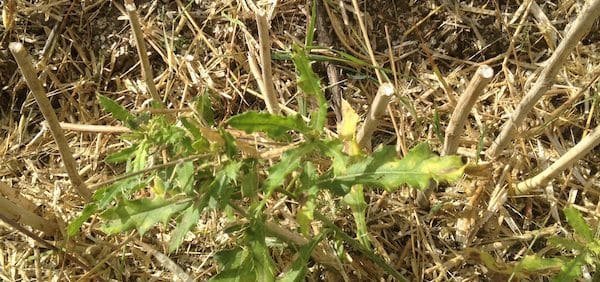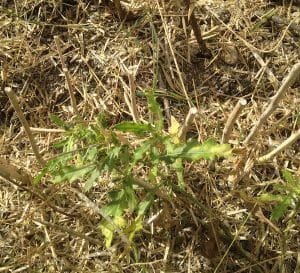Perennials such as thistles and dandelions are best controlled from mid-September to early October.
Waiting at least a month after cutting will increase the target leaf area, but later dates increase the risk of losing healthy leaf tissue to frost. Without healthy leaf tissue, the herbicide can’t get translocation to the weed’s crown and storage roots where the killing can occur.
Factors that promote faster regrowth. With the fall herbicide timing decision, consider that (1) rain will help with regrowth and (2) high cut height could leave behind more weed leaf area for herbicide contact.
Spray conditions. Warmer temperatures and bright sunshine improve herbicide activity. Apply glyphosate and other systemic herbicides during the heat of day when perennial weeds are actively growing and putting energy into their roots. If warm, sunny days are in the forecast, waiting until those days come will give weeds more time to grow and these weather conditions will improve herbicide activity. If frost or rain are forecast, spraying now might be the better choice.
Timing for winter annuals. October until freeze up is a good time to control winter annuals such as narrow-leaved hawk’s-beard, stork’s-bill, annual sow thistle (common and spiny) and cleavers. That way you get all that have emerged. But check weed staging. Many of the post-harvest product labels have weed staging listed, and winter annuals can hit those stages before October. Apply herbicide when the majority of winter annuals have emerged and are at the right stage for control.
Further reading:
Fall herbicides for use on fields that will go into canola next year
Foxtail barley and fall weed control
All Canola Watch articles on fall weed control


